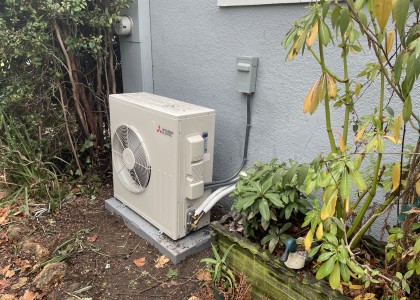Key Findings
- As buildings contribute approximately one-third of total greenhouse gas (GHG) emissions in the United States, there is an urgent need to reduce their GHG emissions. By enforcing targets for GHG emissions and energy use reduction, building performance standards (BPS) are a key policy lever for meeting decarbonization goals.
- Education and awareness remain significant barriers to BPS compliance among affordable housing property owners. Many owners do not know the specifics of policy compliance or are unaware of the policy altogether. To address this knowledge gap, governments can increase and broaden their education and outreach efforts.
- Affordable housing providers, community-based organizations, and other relevant nongovernmental organizations interviewed for this report do not think that federal, state, and local governments are providing sufficient financial and technical assistance to the affordable housing sector to comply with BPS.
- Governments at all levels as well as utilities should increase funding for affordable housing to ensure equitable outcomes from these policies.
- Local governments should identify potential synergies between BPS and other climate mitigation policies, such as electricity rate reform, to prioritize equity and energy affordability in the decarbonization transition.
Executive Summary
A growing number of state and local governments are adopting building performance standards (BPS) to help reduce buildings’ energy costs, reduce peak electricity demand, and support climate change mitigation. Building performance standards require buildings to reduce their greenhouse gas emissions, energy use, or both to meet set targets. BPS hold the potential to either benefit the affordable housing sector and its residents or cause them unintended harms, depending on how the policies are designed and implemented. This report identifies strategies that local governments, community-based organizations, energy utilities, and other stakeholders can use to support affordable housing properties and their residents during the design and implementation of BPS policies.
To date, 4 states and 12 cities in the United States have adopted a BPS policy, with the first in Boulder, Colorado, in 2010 and the latest this year in Cambridge, Massachusetts. So far, only Boulder has reached its first compliance date for buildings to meet performance targets. Despite this, we can begin to learn from jurisdictions’ efforts to ensure equitable outcomes from BPS policies.
Benefits and Challenges of Building Performance Standards for Affordable Housing
Building performance standards have great potential to benefit residents of affordable housing, including with lower utility bills and better air quality (Nedwick and Ross 2020). However, affordable housing managers and residents may also face significant obstacles and risks.
In addition to a lack of awareness, key obstacles to BPS compliance for affordable housing property managers include the property managers’ lack of upfront capital, time, and technical capacity, and the issue of split incentives—that is, in cases where renters pay for utility bills, the property owner may not be incentivized to improve the property’s energy efficiency (Nedwick and Ross 2020).
The main risks to renters from BPS are rent increases from property owners seeking to recoup their investments, short-term displacement while building energy efficiency work is completed, and long-term displacement if rent increases render the unit no longer affordable to them (Jarrah and Tanabe 2022; Hays et al. 2021). BPS compliance may also contribute to the growing disparity in living conditions between renters in properties whose owners can afford building energy upgrades and those who cannot.
Policymakers, community members, utilities, real estate and buildings communities, and others can all play a role in designing and implementing BPS that overcome these challenges and directly benefit residents of affordable housing.
Strategies that State and Local Governments with BPS Are Using to Help Affordable Housing
As state and local governments have begun to adopt BPS, they have developed a variety of strategies to support the affordable housing sector and promote equitable outcomes.
Stakeholder and community engagement. Engaging affordable housing stakeholders, such as tenant rights and housing justice organizations, in the early stages of the BPS development process (as Boston did) can help ensure community perspectives are incorporated in the policy design. Other jurisdictions have mandated the representation of affordable housing stakeholders in the entities overseeing BPS policy implementation (Washington, DC; St. Louis; Montgomery County, Maryland).
Complementary programs. Utilities and jurisdictions have created programs that provide financial assistance, technical assistance, or incentives to support the affordable housing sector with compliance (Boston; Boulder County, Colorado; New York City; Washington, DC; Washington State).
Cost pass-through restrictions. Jurisdictions can limit the retrofit costs permitted to be passed through to tenants from building owners (Chula Vista) or limit the project cost per rental unit (Burlington, Vermont). Regulations such as these aim to limit the potential impacts of required retrofits on rental prices and displacement, but they may also limit the types of upgrades that are financially viable for a building (Silverman, Miller, and Biever 2022).
Alternative compliance pathways. Jurisdictions have made certain buildings eligible for extended compliance deadlines (New York City; St. Louis; Washington, DC; Montgomery County, Maryland) or allow building owners to apply for alternative methods for achieving compliance (New York City).
Case Studies
To understand how existing BPS strategies are impacting the affordable housing sector, we conducted case study interviews with affordable housing providers, community-based organizations, and nongovernmental organizations that have been involved in or affected by the development and implementation of BPS in their cities. These organizations include Energy Outreach Colorado (EOC) in Denver, the Planning Office of Urban Affairs (POUA) in Boston, Habitat NYC and Westchester in New York City, and Hester Street in New York City. Despite positive steps that the cities have taken, each of these organizations identified several challenges with the BPS structure and current city resources and emphasized a need for greater support. We highlight these insights and challenges in three case studies on EOC, POUA, and Habitat NYC and Westchester.
Lessons Learned
Based on our case study interviews, we encourage jurisdictions with or developing BPS and supporting stakeholders to consider the following strategies:
- Engage affected groups to understand the challenges that affordable housing stakeholders face. Such efforts can include translation and interpretation services for participants.
- Design BPS legislation and regulations to maximize flexibility, such as through extended compliance timelines and alternative compliance pathways, and ensure implementing agencies have the staff to support accommodations for affordable housing.
- Increase financial assistance for BPS compliance, increase funding to develop affordable housing, and identify existing funding streams that can be braided to support BPS compliance.
- Broaden education and awareness of the policy.
- Provide technical assistance throughout the building upgrade process to help property owners identify and complete the appropriate improvements.
- Improve coordination among governments, contractors, and utilities to help connect affordable housing managers with needed support.
- Identify related policies, such as electricity rate reform, to help address affordability challenges regarding BPS compliance.
Download
|
Suggested citation: |
|
Jarrah, Alexander, Emily Garfunkel, and David Ribeiro. 2024. Nobody Left Behind: Preliminary Review of Strategies to Support Affordable Housing Compliance with Building Performance Standards. Washington, DC: ACEEE. www.aceee.org/research-report/b2401. |





